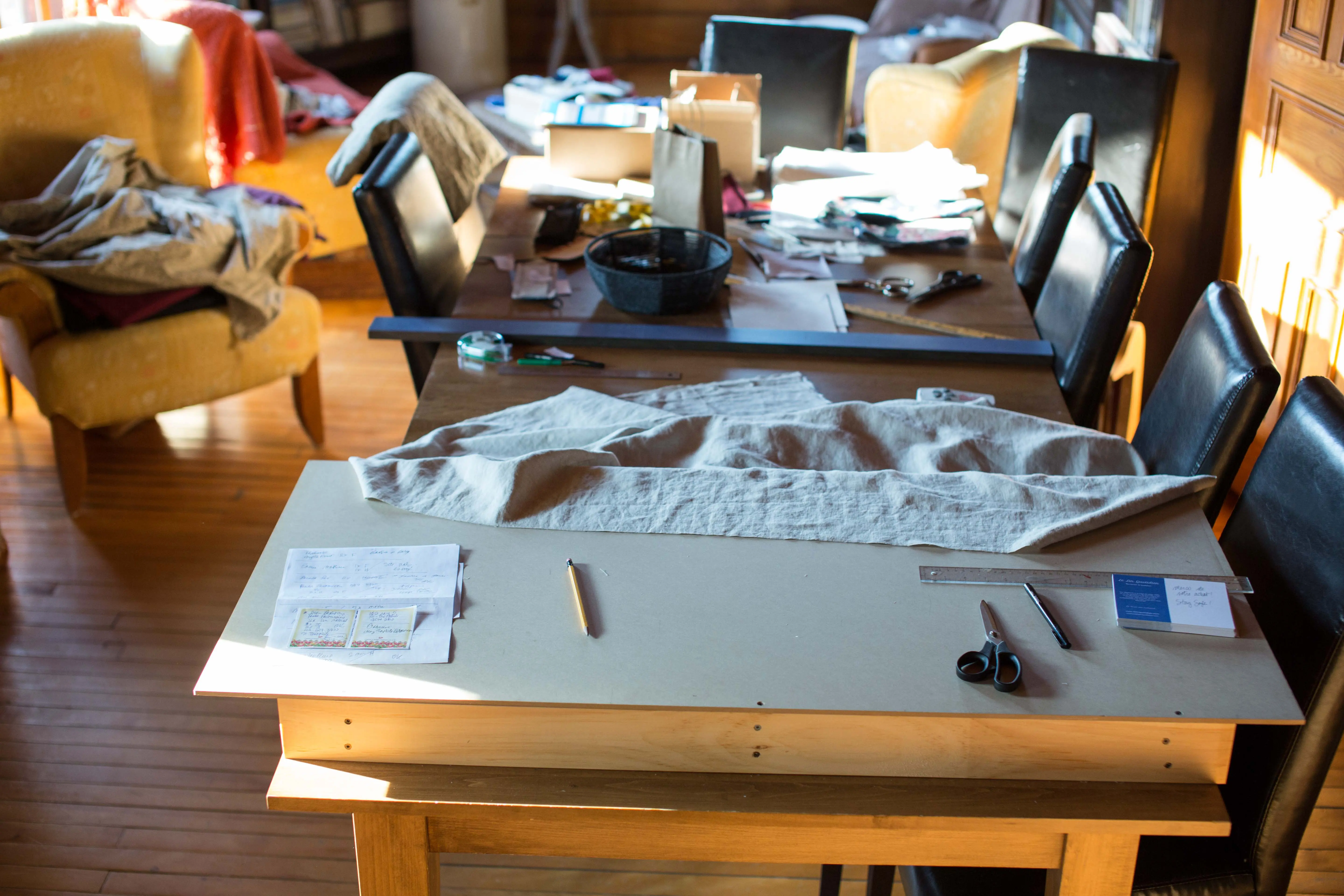
La Presse dans son édition du 15 mai 2020, Masque Artisanal: Comment bien le choisir, soulève et explique divers points importants au sujet des masques sanitaires. L’on y traite des matières utilisées, de l’ajustement, de l’entretien ainsi que du port avec des lunettes et de la buée qui remonte dans celles-ci, faute d’un ajustement inadéquat. Les masques offerts sur Lin + Quotidien répondent à tous les critères de qualité, en plus d’être plus résistant et plus confortable que les masques standards grâce au lin.
Voici les points les plus importants à considérer.
L’ajustement
La Presse rapporte que selon l’Agence de la santé publique du Canada (ASPC), un masque non médical doit être « suffisamment grand pour couvrir complètement la bouche et le nez sans faire de trous »…C’est tout à fait le cas de notre masque sanitaire. L’article se poursuit en relatant qu’en France, l’Association française de normalisation (AFNOR) a rendu public un patron de masque…Lin + Quotidien a choisi le modèle de l’AFNOR. Ce modèle s’ouvre bien, il se referme étroitement sur le visage, il est simple et il est esthétique.
L’AFNOR ajoute que le masque « doit pouvoir être ajusté étroitement sur le nez, les joues et le menton de la personne qui le porte pour assurer une étanchéité suffisante ». On y lit aussi ceci: Recherchez également les entreprises qui insèrent dans leur masque une broche de métal (plastifiée pour éviter les blessures ou l’oxydation) qui vient mouler le contour du nez, évitant ainsi de créer une ouverture indésirable…Or, notre masque a une barrette nasale intégrée dans la valeur de couture. Cette barrette est de la bonne grosseur et elle permet un ajustement étroit sur le nez. Même avec des lunettes (j’en porte!) notre masque ne bouge pas. Comme il s’ajuste bien sur le visage, l’effet de buée dans les lunettes s’en trouve diminuée, aussi parce que le lin et le coton sont des matières naturelles et qu’elles respirent.
Les matières
On ne peut pas faire un masque avec n’importe quel tissu. Selon l’AFNOR, la matière utilisée doit pouvoir résister aux manipulations et à l’usure, et avoir deux caractéristiques : une efficacité de filtration et une résistance à la perméabilité. L’ASPC suggère d’utiliser des matières naturelles comme le lin ou le coton…Notre masque sanitaire est fait de lin et de coton. Pour certains modèles, le lin est placé au dehors, comme c’est le cas de notre masque en lin naturel. Pour le masque noir, le lin naturel est sur le visage et le sergé de polycoton noir (coton et polyester) est à l’extérieur.
Les couches et les filtres
Selon l’ASPC, un masque artisanal doit être constitué d’au moins deux couches de tissu…Notre masque sanitaire possède deux couches de tissu.
La journaliste rapporte que plusieurs entreprises proposent des masques à trois épaisseurs, ou alors avec pochette au centre pour y insérer un filtre…Nous sommes actuellement à développer un masque qui permettra d’insérer facilement un filtre (et croyez-moi le mot facilement a beaucoup de sens!), et nous pourrons faire des recommandations au sujet du filtre à utiliser, non toxique et efficace. Nous ajouterons ce nouveau modèle dès que possible. Nous développons également un modèle qui sera retenu derrière la tête, en plus du modèle que nous offrons maintenant.
L’article a été rédigé par — Iris Gagnon-Paradis, La Presse
